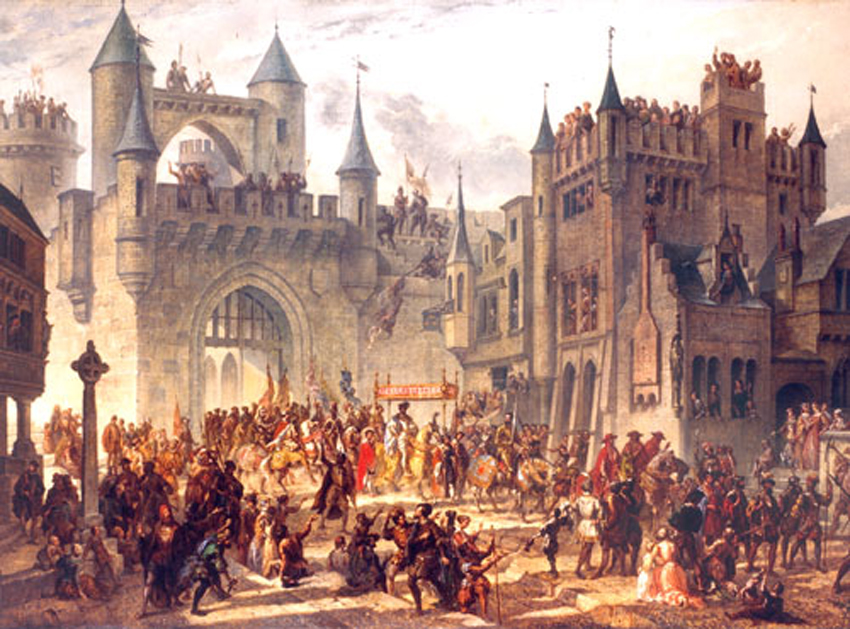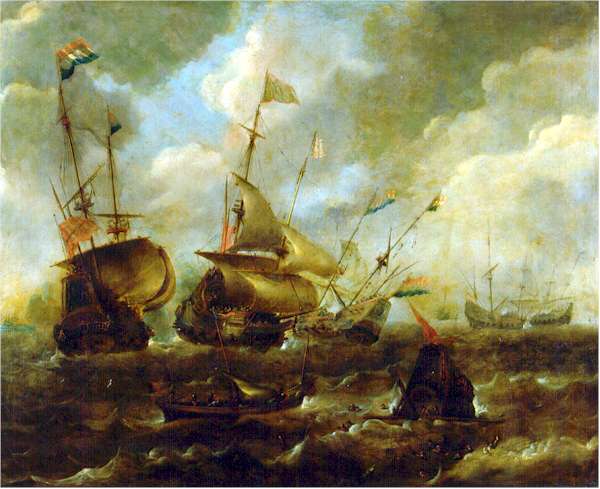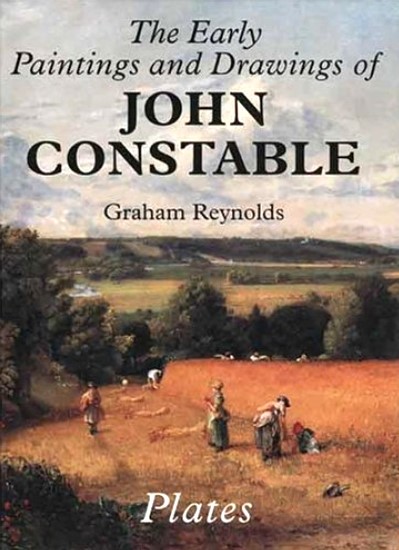|
Sébastien Leclerc (1637–1714)
Sébastien Leclerc or Le Clerc ( aptized26 September 1637— 25 October 1714) was a French artist from the Duchy of Lorraine. He specialized in subtle reproductive drawings, etchings, and engravings of paintings; and worked mostly in Paris, where he was counseled by the King's painter, Charles Le Brun, to devote himself entirely to engraving. Leclerc joined the Académie Royale de Peinture et de Sculpture in 1672 and taught perspective there. He worked for Louis XIV, being made "''graveur du Roi''" (attached to the Cabinet du Roi), doing engraving work for the royal house. Leclerc also engaged in periodic work as a technical draftsman and military engineer. Of his reproductive engravings, the connoisseur and chronicler of artistic life, Pierre-Jean Mariette, wrote in his ''Abecedario'': Early life Sébastien Leclerc was born in 1637 in Metz; the son of Laurent Leclerc (1590–1695), a local goldsmith and merchant, who taught his son the rudiments of his trade. His first ar ... [...More Info...] [...Related Items...] OR: [Wikipedia] [Google] [Baidu] |
Metz
Metz ( , , lat, Divodurum Mediomatricorum, then ) is a city in northeast France located at the confluence of the Moselle and the Seille rivers. Metz is the prefecture of the Moselle department and the seat of the parliament of the Grand Est region. Located near the tripoint along the junction of France, Germany and Luxembourg,Says J.M. (2010) La Moselle, une rivière européenne. Eds. Serpenoise. the city forms a central place of the European Greater Region and the SaarLorLux euroregion. Metz has a rich 3,000-year history,Bour R. (2007) Histoire de Metz, nouvelle édition. Eds. Serpenoise. having variously been a Celtic '' oppidum'', an important Gallo-Roman city,Vigneron B. (1986) Metz antique: Divodurum Mediomatricorum. Eds. Maisonneuve. the Merovingian capital of Austrasia,Huguenin A. (2011) Histoire du royaume mérovingien d'Austrasie. Eds. des Paraiges. pp. 134,275 the birthplace of the Carolingian dynasty,Settipani C. (1989) Les ancêtres de Charlemagne. ... [...More Info...] [...Related Items...] OR: [Wikipedia] [Google] [Baidu] |
Livre Tournois
The (; ; abbreviation: ₶.) was one of numerous currencies used in medieval France, and a unit of account (i.e., a monetary unit used in accounting) used in Early Modern France. The 1262 monetary reform established the as 20 , or 80.88 grams of fine silver. The was a gold coin of one minted in large numbers from 1360. In 1549, the was decreed a unit of account, and in 1667 it officially replaced the . In 1720, the was redefined as 0.31 grams of pure gold, and in 1726, in a devaluation under Louis XV, as 4.50516 grams of fine silver. It was the basis of the revolutionary French franc of 1795, defined as 4.5 grams of fine silver exactly. Circulating currency In France, the was worth 240 deniers (the "Tours penny"). The latter were initially minted by the abbey of Saint Martin in the Touraine region of France. Soon after Philip II of France seized the counties of Anjou and Touraine in 1203 and standardized the use of the there, the began to supersede the (Paris ... [...More Info...] [...Related Items...] OR: [Wikipedia] [Google] [Baidu] |
18th-century French Engravers
The 18th century lasted from January 1, 1701 ( MDCCI) to December 31, 1800 ( MDCCC). During the 18th century, elements of Enlightenment thinking culminated in the American, French, and Haitian Revolutions. During the century, slave trading and human trafficking expanded across the shores of the Atlantic, while declining in Russia, China, and Korea. Revolutions began to challenge the legitimacy of monarchical and aristocratic power structures, including the structures and beliefs that supported slavery. The Industrial Revolution began during mid-century, leading to radical changes in human society and the environment. Western historians have occasionally defined the 18th century otherwise for the purposes of their work. For example, the "short" 18th century may be defined as 1715–1789, denoting the period of time between the death of Louis XIV of France and the start of the French Revolution, with an emphasis on directly interconnected events. To historians who expa ... [...More Info...] [...Related Items...] OR: [Wikipedia] [Google] [Baidu] |
17th-century French Engravers
The 17th century lasted from January 1, 1601 ( MDCI), to December 31, 1700 ( MDCC). It falls into the early modern period of Europe and in that continent (whose impact on the world was increasing) was characterized by the Baroque cultural movement, the latter part of the Spanish Golden Age, the Dutch Golden Age, the French ''Grand Siècle'' dominated by Louis XIV, the Scientific Revolution, the world's first public company and megacorporation known as the Dutch East India Company, and according to some historians, the General Crisis. From the mid-17th century, European politics were increasingly dominated by the Kingdom of France of Louis XIV, where royal power was solidified domestically in the civil war of the Fronde. The semi-feudal territorial French nobility was weakened and subjugated to the power of an absolute monarchy through the reinvention of the Palace of Versailles from a hunting lodge to a gilded prison, in which a greatly expanded royal court could be more easily ke ... [...More Info...] [...Related Items...] OR: [Wikipedia] [Google] [Baidu] |
1714 Deaths
Events January–March * January 21 – After being tricked into deserting a battle against India's Mughal Empire by the rebel Sayyid brothers, Prince Azz-ud-din Mirza is blinded on orders of the Emperor Farrukhsiyar as punishment. * February 7 – The Siege of Tönning (a fortress of the Swedish Empire and now located in Germany in the state of Schleswig-Holstein) ends after almost a year, as Danish forces force the surrender of the remaining 1,600 defenders. The fortress is then leveled by the Danes. * February 28 – (February 17 old style) Russia's Tsar Peter the Great issues a decree requiring compulsory education in mathematics for children of government officials and nobility, applying to children between the ages of 10 and 15 years old. * March 2 – (February 19 old style) The Battle of Storkyro is fought between troops of the Swedish Empire and the Russian Empire, near what is now the village of Napue in Finland. The outnumbered Swedish forces, under the c ... [...More Info...] [...Related Items...] OR: [Wikipedia] [Google] [Baidu] |
1637 Births
Events January–March * January 5 – Pierre Corneille's tragicomedy '' Le Cid'' is first performed, in Paris, France. * January 16 – The siege of Nagpur ends in what is now the Maharashtra state of India, as Kok Shah, the King of Deogarh, surrenders his kingdom to the Mughal Empire. * January 23 – John Maurice, Prince of Nassau-Siegen arrives from the Netherlands to become the Governor of Dutch Brazil, and extends the range of the colony over the next six years. * January 28 – The Manchu armies of China complete their invasion of northern Korea with the surrender of King Injo of the Joseon Kingdom. * February 3 – Tulip mania collapses in the Dutch Republic. * February 15 – Ferdinand III becomes Holy Roman Emperor upon the death of his father, Ferdinand II, although his formal coronation does not take place until later in the year. * February 18 – Eighty Years' War – Battle off Lizard Point: Off the coast of C ... [...More Info...] [...Related Items...] OR: [Wikipedia] [Google] [Baidu] |
Catalogue Raisonné
A ''catalogue raisonné'' (or critical catalogue) is a comprehensive, annotated listing of all the known artworks by an artist either in a particular medium or all media. The works are described in such a way that they may be reliably identified by third parties, and such listings play an important role in authentification. Etymology The term ''catalogue raisonné'' is French, meaning "reasoned catalogue"Catalogue raisonné , ''Online Merriam-Webster Dictionary''. (i.e. containing arguments for the information given, such as attributions), but is part of the of the English-speaking art world. The spelling is never Americanized to "catalog", eve ... [...More Info...] [...Related Items...] OR: [Wikipedia] [Google] [Baidu] |
Ephraim Chambers
Ephraim Chambers ( – 15 May 1740) was an English writer and encyclopaedist, who is primarily known for producing the '' Cyclopaedia, or a Universal Dictionary of Arts and Sciences''. Biography Chambers was born in Milton near Kendal, Westmorland, England. Little is known of his early life but he attended Heversham Grammar School, then was apprenticed to a globe maker, John Senex, in London from 1714 to 1721. It was here that he developed the plan of the '' Cyclopaedia, or an Universal Dictionary of Arts and Sciences''. After beginning the ''Cyclopaedia'', he left Senex's service and devoted himself entirely to the encyclopedia project. He also took lodging in Gray's Inn, where he remained for the rest of his life. Chambers died in Islington and was buried in the cloisters of Westminster Abbey. Writing The first edition of the ''Cyclopaedia'' appeared by subscription in 1728 and was dedicated to George II, King of Great Britain. When he died in 1740, he left materials for a ... [...More Info...] [...Related Items...] OR: [Wikipedia] [Google] [Baidu] |
Venus Anadyomene
Venus Anadyomene (from Greek, "Venus Rising From the Sea") is one of the iconic representations of the goddess Venus (Aphrodite), made famous in a much-admired painting by Apelles, now lost, but described in Pliny's ''Natural History'', with the anecdote that the great Apelles employed Campaspe, a mistress of Alexander the Great, for his model. According to Athenaeus, the idea of Aphrodite rising from the sea was inspired by the courtesan Phryne, who, during the time of the festivals of the Eleusinia and Poseidonia, often swam nude in the sea. A scallop shell, often found in Venus Anadyomenes, is a symbol of the female vulva. The subject never entirely disappeared in Western art, and revived greatly in the Italian Renaissance, with further boosts in the Baroque and Rococo, and in late 19th-century Academic painting. At least one central female nude is practically required in the subject, which has contributed to its popularity. Antiquity According to Greek mythology, Aphrod ... [...More Info...] [...Related Items...] OR: [Wikipedia] [Google] [Baidu] |
Pierre Brébiette
Pierre Brébiette (1598 ? - 1642) was a French painter and etcher. Brebiette was born in Mantes-sur-Seine and lived and worked in Italy, much of the time in Rome, from 1617 to circa 1625. He and his wife, who died in 1637, had seven children together. Many of his etchings and some of his drawings have been preserved, but so far only one of his signed paintings has been positively identified and widely accepted as his work. That work, an oil on canvas entitled ''The Rape of Proserpina by Pluto'', is now in the Picot collection within the collections of the Musée des Beaux-Arts et d'Archéologie de Châlons-en-Champagne. Brebiette's paintings were popular enough in the mid-17th century to inspire at least ten known engravings marked as having been designed based upon his paintings. While some of the themes of Brebiette's works are biblical, based upon the remaining engravings of his paintings by others and etchings by his own hand, he seems to have mainly chosen classical Greco ... [...More Info...] [...Related Items...] OR: [Wikipedia] [Google] [Baidu] |
Abraham Bosse
Abraham Bosse ( – 14 February 1676) was a French artist, mainly as a printmaker in etching, but also in watercolour.Maxime Préaud, "Célébrations nationales 2004, Arts: Abraham Bosse, graveur en taille-douce et théoricien de l’art français", 2004 Based on recent research, his date of birth has been corrected to 1604 from the traditionally given birth year of 1602. Bosse's apprenticeship contract was found in which it is mentioned that he was aged 16 at the date of signing the contract (16 June 1620). Life [...More Info...] [...Related Items...] OR: [Wikipedia] [Google] [Baidu] |







